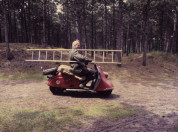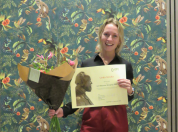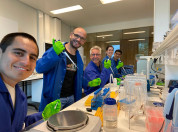Zoeken
Filteren op
Type
Labels
Dossiers
Thema's
Afdelingen
Taal
Active filters
1744 zoekresultaten
Zoekresultaten
-
Alumni Community
For NIOO it is important to keep in touch with our alumni. Therefore we created an alumni community.
-
Linda Gouka wint prijs voor heldere uitleg van haar onderzoek
Linda Gouka heeft op 20 november de Jan Ritzema Bosprijs 2025 ontvangen. De prijs wordt toegekend aan jonge wetenschappers (promovendi) die in staat zijn om onderzoek aan een gecompliceerd wetenschappelijk vraagstuk op het gebied van plantgezondheid op een heldere manier uit te leggen aan geïnteresseerde niet-wetenschappers.
-
Data breach discovered at the KNAW
On 24 November, the KNAW discovered a data breach caused by a phishing email. From 17 November onwards, a hacker had access to the mailbox of a KNAW employee and used that account to send phishing emails to contacts listed in it.
-
Datalek ontdekt bij de KNAW
Op 24 november heeft de KNAW een datalek vastgesteld dat is ontstaan door een phishingmail. Een hacker had vanaf 17 november toegang tot de mailbox van een KNAW-medewerker en heeft vanuit dat account phishingmails verstuurd naar contacten die daarin stonden.
-
Climate change effects on plant-fungal interactions in wetland and heathland systems (vacature in het Engels)
Are you curious about how climate change will impact plant growth in wetland and heathland systems? We are looking for a motivated student to study how mutualistic fungi (ericoid mycorrhizal fungi) respond to elevated temperatures and what this means for the plants they associate with. -
Climate change effects on plant-fungal interactions in wetland and heathland systems
Are you curious about how climate change will impact plant growth in wetland and heathland systems? We are looking for a motivated student to study how mutualistic fungi (ericoid mycorrhizal fungi) respond to elevated temperatures and what this means for the plants they associate with. -
Mycorrhizal fungi in invasion: differences between native and non-native plant species (vacature in het Engels)
Are you curious about the role that mycorrhizal fungi play in mediating plant invasions? We are seeking a motivated student to test how non-native species differ from native species in their mycorrhizal relationships to understand how they invade. -
Mycorrhizal fungi in invasion: differences between native and non-native plant species
Are you curious about the role that mycorrhizal fungi play in mediating plant invasions? We are seeking a motivated student to test how non-native species differ from native species in their mycorrhizal relationships to understand how they invade. -
Jos Raaijmakers made it again to the “Highly Cited Researchers” list
Clarivate publishes an annual list of the top 1% most cited researchers worldwide. For the eighth year in a row, NIOO researcher Jos Raaijmakers is included.
-
Jos Raaijmakers is ook in 2025 'Highly Cited Researcher'
Elk jaar publiceert Clarivate een lijst met de top 1% meest geciteerde onderzoekers wereldwijd. Voor het achtste jaar op rij staat NIOO-onderzoeker Jos Raaijmakers daarop.
